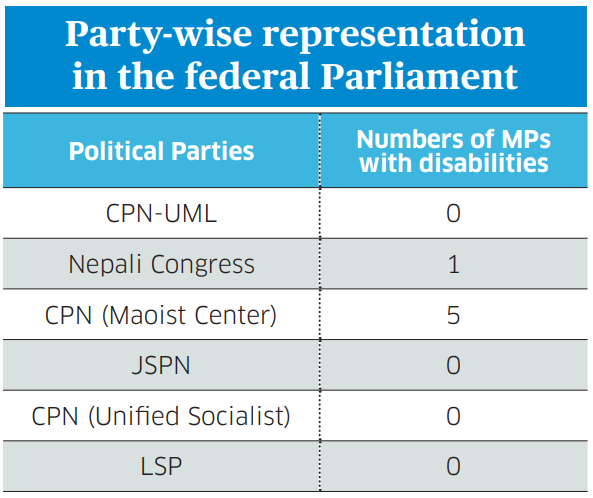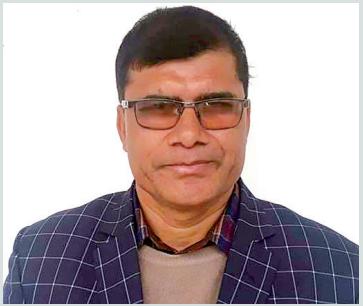Covid-19 in 2021: A year of ‘learning’ for Nepal
The year 2021, in a way, represents another ‘lost year’ for Nepal as all sectors continued to be deeply affected by the Covid-19 pandemic, even though there was a slight reprieve at the year’s end. As soon as the second wave hit in late April, the government, in collaboration with District Administrative Offices, imposed prohibitory orders, with varying levels of restrictions in different districts. From July, the lockdowns were gradually lifted as covid cases declined.
Due to the constant political turmoil, the Ministry of Health and Population had five different ministers in 2021. This also led to a frequent change of officials at health institutions and major hospitals, adding to the difficulties of pandemic-control.
The larger number of daily new cases and lower number of recoveries in May caused an acute shortage of oxygen cylinders, hospital beds, ventilators, ICUs, and other medical supplies. The death rate also spiked, with around 4,000 dying in the month alone. As the second wave’s effects declined, recovery rates, compared to new cases, increased, resulting in only two percent active cases (at the moment).
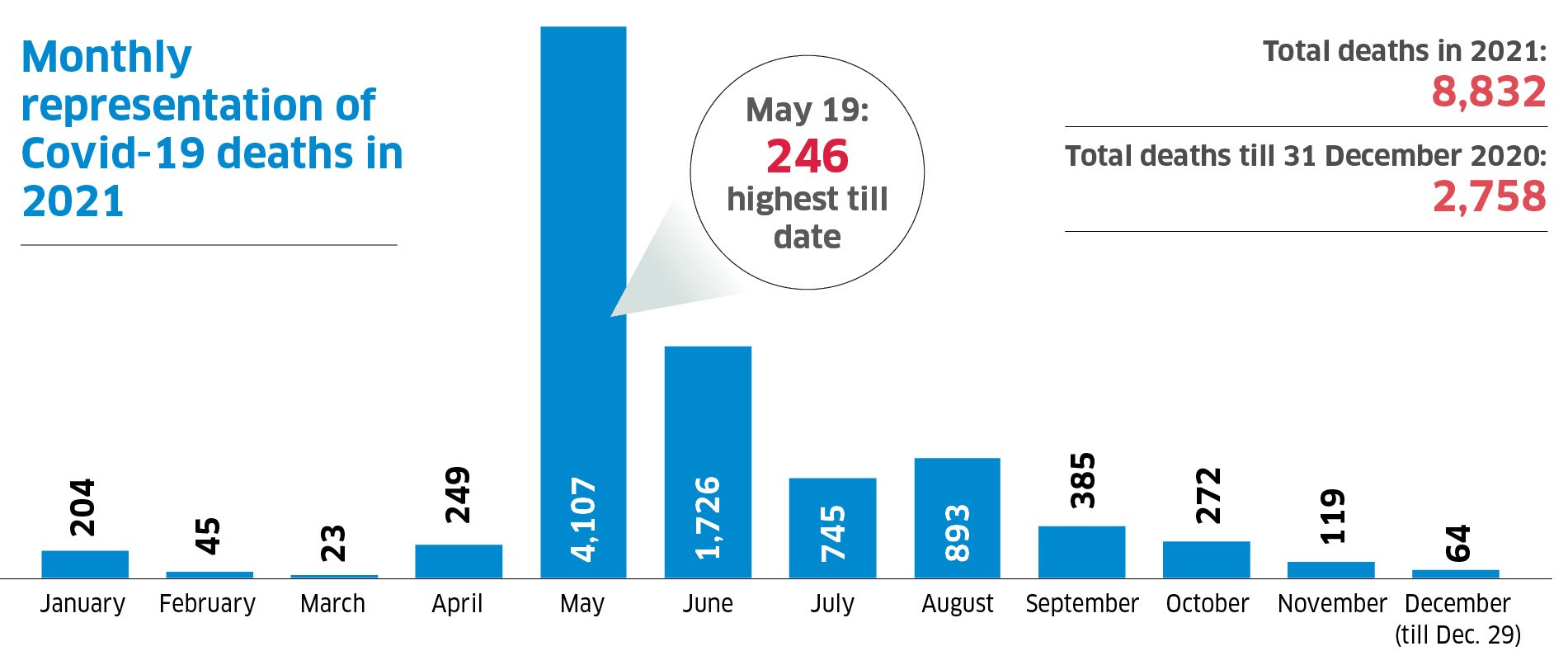
The first-ever set of covid vaccines came to Nepal on 21 January 2021, and people got their first jabs on January 27. The first delivery included a million doses of Oxford-AstraZeneca vaccines provided by India as a grant, while Nepal agreed with Serum Institute of India to buy another two million doses of the same vaccine. But the company later refused to provide the jabs, depriving almost two million people of timely second doses.
Under various vaccine campaigns across the nation, Nepal approved six types of covid vaccines but only four of them—AstraZeneca (India, Japan, Europe), Vero Cell (China), Janssen (US), and Pfizer (US)—are now being used. As of now, over 35 percent of the population of Nepal is fully vaccinated. On November 14, Nepal rolled out Pfizer to children over 12 who also is the first country in the Asia-Pacific region to give covid vaccines to refugees.
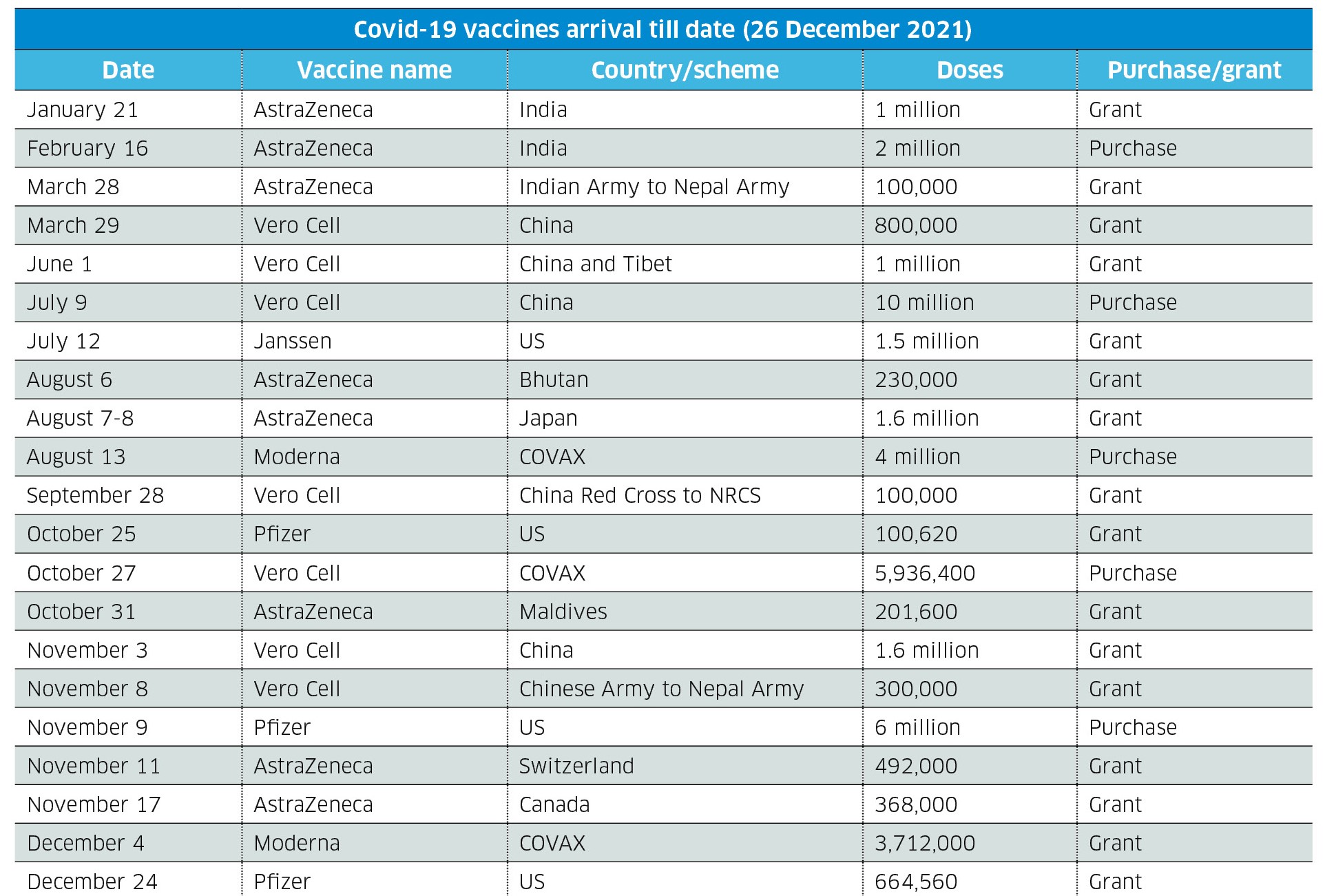
Lately, a new corona variant—Omicron—has been detected. Nepal has so far confirmed three cases of this variant—the first two on December 6 and the third on December 22. The effect of vaccination on this variant is as yet largely unknown. Moreover, a final decision on giving booster doses to the fully-vaccinated population is yet to be taken.
“The year of learning”
Dr Sangita Kaushal Mishra
Spokesperson, Ministry of Health and Population
The Delta variant was not kind to us, yet we have learned many things from this unpleasant covid journey. Everyone knows the areas in which we as a country fell behind, but here I want to focus on the positives.
The year 2021 made us prepared for the next wave—whenever it hits. We have much better medical equipment like ICUs, ventilators, oxygen plants, etc, even at the local level.
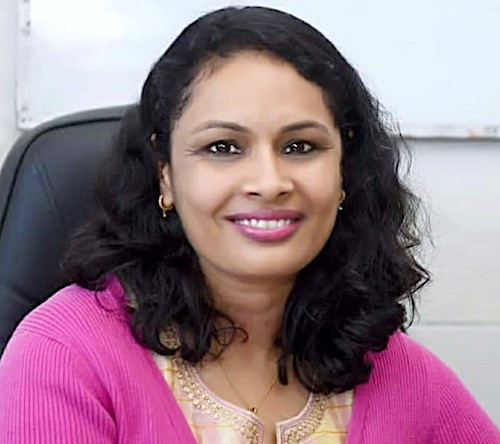
The death of over 8,000 people is something no one wanted. The general public, after the second wave, has been aware of the risks. So there has been a collective effort to minimize the pandemic’s effects. Vaccination started right from the start of 2021 and there has been good progress throughout the year. Even if the Omicron variant has now been detected, we are still, by and large, coping with the Delta variant.
Summing up, 2021 had both positives and negatives but most of all, it was a year of learning for all involved in Nepal’s health sector.
No political party for Nepalis with disabilities
Article 29 of the United Nations Convention on the Rights of Persons with Disabilities (UNCRPD) says, “State parties shall guarantee to persons with disabilities, political and public rights and the opportunity to enjoy them on an equal basis with others.”
Around 15 years after the convention’s drafting, the entire world has lately taken a stand in favor of proportional inclusion and representation for the population with disabilities. Nepal is one of the laggards.
According to the 2011 census, around 1.94 percent of Nepal’s population lives with some form of disability. The preamble of the Constitution of Nepal 2015 talks of building “… an egalitarian society founded on the proportional inclusive and participatory principles to ensure economic equality …” This means, in each sector, two percent of the seats are to be set aside for the persons with disabilities (PWDs).
But have we adhered to the provisions of our constitution and international treaties?
As politics lies at the center of everything, it is worth asking how inclusive this field is when it comes to the PWDs. Not very much, unfortunately.
In the federal parliament of Nepal, of 275 MPs, only two are with disabilities, both from the CPN (Maoist Center). The Maoists have thus provided relatively more seats to the people living with disabilities, but they also consider those injured in the armed rebellion as PWDs. Chudamani Khadka, an MP with a disability due to a bullet injury he sustained during the insurgency, is a long-time personal aide to chairman Pushpa Kamal Dahal.
Teknath Neupane, former chairman of Apangata Sangathan Nepal, a Maoist PWD sister organization, accepts that the party has given more priority to those who sustained injuries during the conflict over those born with disabilities. Injured cadres from the armed revolution who were ready to sacrifice their lives for the party deserve the attention, he says. But, he adds, “They have now gained enough recognition and time has come to start treating all those with disabilities with the same yardsticks.”
Party spokesperson Narayan Kaji Shrestha accepts that those who got disabilities during the conflict climbed the ladder of political leadership faster compared to other PWDs.
A recent standing committee decision, before the party’s national conference, made it mandatory for party units to select at least one person with disability as a delegate to the convention from each local level. “We are strengthening the party from the base-up and ultimately, each will find his or her rightful place in leadership,” Shrestha promises.
In the National Assembly, there are four PWDs—one from Nepali Congress and three from Maoists. Similarly, the seven provincial parliaments, in total, have no more than a PWDs, all from Congress and Maoists. CPN-UML and other parties don’t have a single such provincial lawmaker.
“There are 15 MPs who qualify as PWDs in the country. This number should have been enough to raise our issues in parliaments, but regretfully, only few of them consider themselves PWDs,” says Bhojraj Shrestha, chairman of Rastriya Loktantrik Apanga Sangh, the Nepali Congress sister wing for the person with disabilities.
Shrestha, along with 22 other members, had formed the organization back in 2006, but the party officially recognized it only in 2009.
Says Jagadish Prasad Adhikari, general secretary of Loktantrik Rastriya Apanga Sangathan, a CPN-UML sister organization, who also was a convention representative at the 10th UML General Convention, “My party has neither addressed our issues nor given us a seat on party committees.”
Also read: Nepal struggling to deal with new refugees
During the latest UML general convention, not a single person with disability won a party-leadership position. Of the 12 PWD delegates, five were from the quota of the sister wings. “We didn’t contest as the party asked us for consensus and we respected the policy, but later, we got scammed,” he says.
Newly elected UML Secretary Yogesh Bhattarai says there was no restriction to contest elections. For him, inclusion is a new concept, and it takes time to adapt. “We are discussing separate seats for the person with disabilities in the party’s committees,” he adds. But UML recently published the nominated list of 30 members in the central committee and again, not a single party person with a disability got the nomination. According to Bhattarai, the party is still working to include them besides the central committee.
As the Maoist national conference is around the corner, cadres of its PWD wing are hopeful of more representation in the party. “Our party has shown the way, it’s time to see how they implement the policies,” says Neupane.
Because of poor management, Nepali Congress hasn’t been able to hold its 16 district conventions, barring many deserving party members from filing candidacies. The same happened with Shrestha of the NC sister wing, as he didn’t get to contest for the posts. “Of the six people with disability who are contesting for a seat in the central committee, almost none consider themselves a PWD or part of the disability movement,” he adds with disappointment. “But I am sure they are the ones who will win.”
Debu Parajuli was told by the Rastriya Prajatantra Party that they have no quota for the PWDs. She then filed her candidacy for central committee member from the open category, getting the sixth most votes.
“People with disabilities can stand toe to toe with anyone,” she says. “Quotas are necessary but if you don’t fit into them, please enter the contest from the open category. That I won means that I defeated an ‘able’ person,” Parajuli says.
The other problem is that political parties’ leaderships still don’t deem the person with disabilities good enough for important party posts. Moreover, the PWD quotas are often misused.
Mitra Lal Sharma
President, National Federation of the Disabled-Nepal (NFDN)
Our presence in decision-making is a must
I find it pathetic when people think that our needs and aspirations should be confined to getting wheelchairs and other disability-friendly infrastructure. We are not given leadership positions even when we have the requisite knowledge and skills.
Let’s compete. This is an open challenge to the leaders of mainstream political parties. If the people/team you carry can defeat us with your knowledge, ideology and skills, we are fine with not being included, but what if we win? They need our vote and tax, but not our knowledge. Let me ask our political leaders: What is the required qualification to lead a major political party?
When there is a lack of our participation in policymaking, the problems of the people with disability can’t be addressed as other people do not know about our issues and even if they do, they often don’t bother to speak about them. So our presence in decision-making is a must.
Krishna Khanal: Too early to speculate about future Nepali Congress presidency
The recently-concluded 14th general convention of the Nepali Congress has generated a lot of speculations, particularly concerning the much-desired generational change at the top and the party’s future electoral prospects.
Pratik Ghimire of ApEx talked to Krishna Khanal, political analyst and professor of political science at Tribhuvan University, about the party’s present and future.
How would you evaluate the recent Nepali Congress general convention?
As the party’s membership distribution process is controlled by main leaders, I had thought the final results would reflect a compromise among various factions. But the distribution of votes says the opposite. We can see a strong urge for change. To an extent, this has started a good trend. The election of leaders like Gagan Thapa and Bishwa Prakash Sharma shows what the cadres want.
Only two of the new 13-member office-bearers are old faces. What is the significance of this result?
Your statement is not true. Even as 11 new faces have been elected office-bearers, many of them like Bhishma Raj Aangdambe, Purna Bahadur Khadka and Farmullah Mansur have been near party leadership since the 90s. They are neither new nor represent anything new in the party. So I don’t consider this an indicator of progress.
Also read: Why are Nepali Congress leaders afraid of technology?
Can Sher Bahadur Deuba run the party as per his wishes this time as well?
I guess yes because the president is the executive with all the powers. There will be more dissent than before for sure, but Deuba will be the man to take the final call on important issues. A few voices of dissent will not stop him from doing what he wants. So it’s better to not expect much.
Is it fair to say that Gagan Thapa or Bishwa Prakash Sharma stand a chance to win party presidency come the next general convention?
It would be too early to say that. But it is true that if they can maintain support from voters in the long run, this convention has created a firm foundation for them. Moreover, four years is a long time in politics. How the party performs in the upcoming elections and how the public sees this particular crop of leaders will determine a lot of things.
What in your view were the salient differences between the general conventions of the Nepali Congress and the CPN-UML?
Nepali Congress is an old democratically-run party. So no other party has democratic values comparable to it. The convention was open and tough for candidates, whereas the UML had narrowed down the path to electoral victory by seeking consensus candidates. So these two general conventions can’t be compared.
The other difference is that NC has an inclusive design for office bearers despite its factionalism. The UML was a one-man show. Similarly, NC cadres know who can lead the party in the future but in the UML, it’s just a matter of who KP chooses.
Why are Nepali Congress leaders afraid of technology?
The just-concluded 14th Nepali Congress General Convention will be best remembered for two reasons: the emergence of Shekher Koirala as a serious contender for party leadership—and the ubiquitous green water-tanks that doubled as ballot boxes. People were left scratching their heads as the CPN-UML, the country’s largest party, had only just successfully employed e-voting to elect its leadership in its general convention. If e-voting was good enough for UML, why wasn’t it for NC?
Pratik Ghimire of ApEx talked to Neel Kantha Uprety, former chief commissioner of the Election Commission and researcher on elector finance and governance.

What do you think explains the tech-phobia of Nepali Congress?
Even in the previous UML general convention in 2014, electronic voting had been considered before one of its leaders refused to accept it at the last minute. We tried to convince him, but he would not budge. But this time, the party really did switch to electronic voting. I believe Congress must also have considered using the paperless system, but their conservative beliefs stood in the way. They are afraid of technology. This is akin to counting cash by hand even after getting it counted by a reliable machine.
Is there any other reason behind the NC’s reluctance to switch to electronic voting?
The other reason is that politicians and local hooligans can’t tear ballot papers or manipulate the results if all votes are cast electronically. This might be an unpopular but true reason.
Also read: Rajendra Lingden: No one person or family will direct RPP
Nepal piloted an electronic voting system in one constituency back in 2008, but why didn’t it continue?
We had brought well-working second-hand machines from India. They were good to use, but due to unavoidable technical complications, we had to stop using them. The machines were designed for fewer candidates than we usually have in Nepal. The software was also not designed for the election system in Nepal. We could have worked on it, but nobody cared to do so.
So our conservative politicians are the hurdle, then?
The latest data shows 38 million mobiles are in use in Nepal—which is more than our population. Most people, even the elderly, have started using smartphones. This proves that we are a technology-friendly country but politicians have been halting our progress. They lack interest, belief, and willpower to start something new. These days, the machines can be customized for just about any election . Politicians fear the instant results machines provide.
National elections are around the corner. Could we switch to e-voting by then?
Before switching to electronic voting in the general election, political parties should normalize the use of machines in their conventions. It would help build public trust. In India also, machines were first used by political parties for their internal elections. And we should re-pilot them by deploying them in a few constituencies across the country this time. When the Election Commission can give results with 100 percent accuracy, everyone will accept it, for sure.
NMB Bank: The trendsetters in adapting best international practices
NMB Bank has been awarded the ‘Bank of the Year Nepal’ title for four of the past five years. Most recently, the bank won the ‘The Bank of the Year Asia 2021’ from The Banker magazine, London.
The latter award is regarded as the industry standard for assessing banks across the globe and recognizing the world’s leading institutions. NMB is the first-ever Nepali bank to get this award since its commencement in 2000.
Pratik Ghimire of ApEx talked to Sudesh Upadhyaya, deputy CEO of NMB Bank, on the bank’s achievements and the prevailing market challenges.
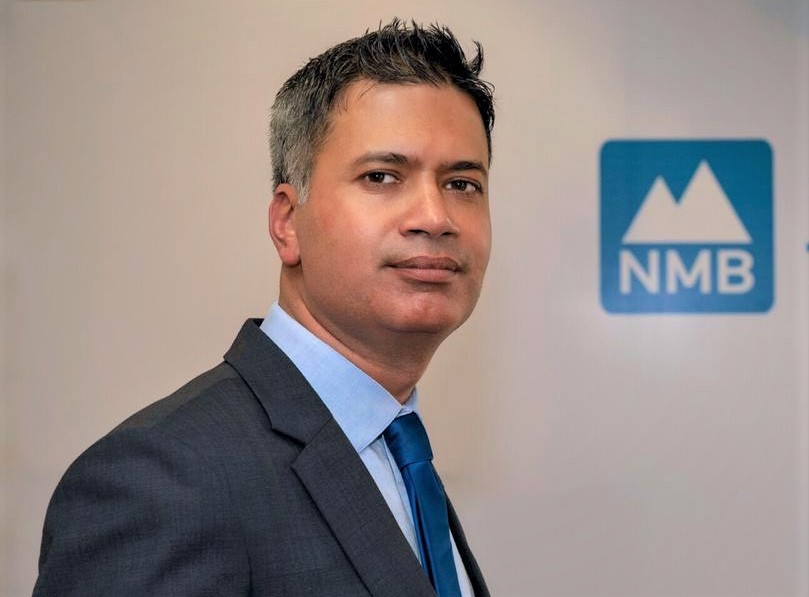
Let’s start with ‘The Bank of the Year Asia’ award. How did that happen?
After 2015, we consistently prioritized three pillars: sustainable banking, digital transformation, and corporate governance. This is the main reason we became the best in Asia. Sustainable banking means we invest in environment-friendly companies by valuing our social responsibilities. We prefer sectors that help communities rather than a few individuals.
We are the frontrunners in terms of many new practices in the Nepali banking sector. For instance, we were the first bank to launch the ‘Omnichannel’ system under which KYC can be processed through video and certain operations can be performed using a messenger, and so on. With Omnichannel, any customer can apply for a loan online, and it will be issued (if the documents are correct) without printing any paper. These are examples of our digital transformation.
We strictly adhere to corporate governance. We treat all stakeholder, shareholder, customer, staff, and other bank-related companies and individuals as equals. On many occasions, our bank has compromised on profit to make people happy.
What is the driving force behind your recent success?
The greatest motivation comes from an appreciation of our work. Thankfully, our stakeholders, shareholders, customers, and others love, enjoy, and most importantly, trust our work.

What are the core values of your bank?
Integrity, compliance with regulations, customer focus, teamwork, and innovation are our core values, and these things guide, bind, and drive us on the path of success. These values, we believe, are fundamental to defining not only who we are, but also what we do and in what manner we serve.
NMB is a founding member of the Global Alliance for Banking on Values. What are its benefits?
I talked about practicing new systems of sustainable banking, digital transformation, and corporate governance. These values come from the alliance, as this is a team that works to improve the norms, ethics, values, and responsibilities. We learn from international banks and other Nepali banks follow our lead.
Also read: Daraz: Revolutionizing e-commerce in Nepal
Now let’s move to market challenges. Nepal Rastra Bank has increased the capital of commercial banks to Rs 8 billion, and most of the banks are overcapitalized.
NRB increased the mandatory figure from Rs 2 billion to 8 billion, which compelled commercial banks to compete. So, they gave lower returns to investors as they were overcapitalized. But, with time, the banks are getting stronger and more stable and they will return their fair share.
The central bank has also intervened on fixed deposit rates. How will it affect the banks?
Again, due to competition, banks had to increase interest on fixed deposits. But after the NRB introduced the protocols, banks were obligated to follow. A few months ago, we had witnessed malpractices, but everything is under control and running smoothly right now.
How do you fight the liquidity crisis?
We are in touch with international brands and because of our policies and goodwill, we have their trust. We can get liquidity from outside the country as well. Similarly, we, along with other banks, are working to convince Nepalis abroad to send money home because remittance, the major source of liquidity, is lower than in the previous years. There have been rumors they send money through illegal channels, so we are working on ways to help them start sending money through formal channels.
Dr Rajesh Pradhanang obituary: A socially responsible homeopathic doctor
Birth: 25 October 1967, Kathmandu
Death: 12 December 2021, Lalitpur
For Dr Rajesh Pradhanang, his father, Dr Krishna Bhakta Pradhanang, a homeopathic doctor, was a role model whose footsteps he wanted to follow on.
But this was not the only reason the son wanted to pursue homeopathy. Even though the homeopathic system of medicine had been used in Nepal for at least a century, it had not gained much traction due to the lack of physicians. So, Pradhanang took it as a challenge to establish homeopathy as a respectable profession in Nepal.
As soon as he completed his Intermediate of Science degree from Amrit Science College in 1987, Pradhanang went to India and joined a Diploma in Homeopathic Medicine and Surgery course at Pratap Chandra Memorial Homeopathic Medical College and Hospital.
In the same year, he returned to Nepal with a certificate and started a private clinic. This he did on October 29, the birthday of his teacher, Dr DJ Sutarwala. He also started a free homeopathic dispensary at Thai Kirti Monastery, Kirtipur.
In 2005, Pradhanang established the Buddha Maitreya Soul Therapy Center in Thamel, which treats maladies with light and music. The treatment is a combination of spiritual and medical healing—the first of its kind in Nepal.
Also read: Dr. Subash Lohani obituary: A spiritual neurosurgeon
He organized numerous free health and wellness camps in rural areas of Nepal to establish a positive perception about homeopathy and to help people benefit from medical and spiritual practices. Pradhanang was also keen to work in the field of child psychology. He thought children, the future of the nation, should be healthy if the country is to progress.
During the 2015 earthquake, he managed shelter and food for many affected people with the help of different Buddhist institutions and schools.
To spread awareness about the benefits of homeopathy, he also started to write health columns in newspapers, magazines, and run TV shows. Pradhanang’s work has appeared in over two dozen media outlets over the past two decades. Every few years, he used to get an invite from the International Council for Homeopathy to help organize its world conference and to prepare a homeopathic book.
Recognizing his contribution, Nepal Cancer Relief Society and Nepal Orthopedic Hospital had even awarded him.
A couple of weeks ago, Pradhanang and his wife tested positive for Covid-19. They had developed severe symptoms and were rushed to hospital. His wife got discharged after successfully defeating the virus a few days later, but he succumbed. The 54-year-old is survived by his wife, a daughter, and a son.
Nimsdai: The man who went beyond the possible
I am pretty sure that most of you have already watched ‘14 Peaks: Nothing is Impossible’—the Netflix documentary on Nirmal Purja (Nimsdai) about his record-breaking mountain expedition: Project Possible 14/7.
The documentary released on 26 November 2021 has become one of the most watched films of the week on Netflix. It is on the seventh position globally with over 12 million hours of watchtime and received an 8.2 rating on IMDb.
Born in Myagdi to a lower-middle-class family that moved to Chitwan, Purja was surrounded by Gurkha soldiers in the family. He also joined the Brigade of Gurkhas in 2003 and was accepted into the Royal Navy’s Special Boat Service (SBS) in 2009, becoming the first Gurkha to join the elite British unit. He further served in Special Boat Service as a cold-weather warfare specialist and Special Air Service (SAS) unit.
Purja first got into mountaineering in 2012 when he summited Lobuche (6,119m) and Dhaulagiri in 2014. He summited the highest peak in the world, Everest in 2016. Even at this point, he did not think of bidding adieu to the military.
In 2017, he completed the Everest-Lhotse-Makalu summit within five days. “I later realized I could have done it in three days, had I not rested,” he says on the idea of climbing all 14 peaks in the world above 8,000m in less than seven months. The previous record for the same feat was nearly eight years, but he did it in just six months and six days. “A lot of people didn’t believe me at the time when I shared my idea,” he adds.
Also read: Dr Garima Shrestha: A doctor treating social taboos
For Project Possible 14/7, Nimsdai was accompanied by Mingma David Sherpa, Lakpa Dendi, Geljen Sherpa, and Tensi Kasang, among other mountaineers. They started with Annapurna on 23 April 2019, and on 24 May 2019, they had completed climbing six of the mountains, completing phase I. This time, he broke his own world record by climbing Mt Everest, Lhotse, and Makalu in 2 days and 30 minutes.
The second phase of his project took him to Pakistan where he had to summit five peaks, including the deadly K2 and Nanga Parbat. Nimsdai and his team made another world record by climbing K2 on 24 July 2019—the first-ever winter ascent. Numerous climbers had failed to do so since the first attempt in 1987. Also, he was the only team member to the summit without the use of supplemental oxygen, becoming the first individual to do so in history.
Many other climbers suggested he should halt the project due to unfavorable weather conditions before phase I, but every time, his reply was “Giving up is not in the blood, sir. It’s not in the blood”—which later became a famous dialogue in his documentary.
The last phase started on 23 September 2019. This phase had some real hurdles due to permit issues from the Chinese side to climb Shishapangma, which lies in China. Due to the fall season, China had already closed the expedition for the year but with requests from all over the world, China granted Nimsdai and his team a special permit to scale the mountain on 1 October 2019. And on October 29, the Project Possible 14/7 was successfully completed.

“The project was never about me individually or a race or a community. It was about the limits a human being can push to, and for that, I got support from all over the world,” he says.
Other than the major world record of the fastest ascent of the 14 tallest mountains in the world, Nimsdai broke these Guinness World Record: Most 8000m mountains (six) in the Spring season; most 8000m mountains (five) in the Summer season; the fastest summit of the three highest mountains in the world, Mt Everest, K2, and Kanchenjunga; the fastest summit of the five highest mountains in the world, Mt Everest, K2, Kanchenjunga, Lhotse, and Makalu; fastest bottom 8000m mountains, Gasherbrum I, II, and Broad Peak; fastest consecutive summits of Everest, Lhotse, and Makalu in 48 hours, beating his own previous record of five days.
Even before his legendary world records, Nimsdai was appointed as a Member of the Order of the British Empire (MBE) by Queen Elizabeth II for his outstanding work in high altitude mountaineering on 9 June 2018. This recognition was for his captaincy in the Gurkha Expedition ‘G200E’, which summited Mt. Everest together with 13 Gurkhas to commemorate 200 years of Gurkha service in the British Army on 15 May 2017.
Rajendra Lingden: No one person or family will direct RPP
The ‘Unity General Convention’ of the pro-monarchy Rastriya Prajatantra Party elected senior leader Rajendra Lingden as its chairman. The three-day event, held in Kathmandu, saw Lingden defeat Kamal Thapa, who accused former King Gyanendra of interfering in the party’s affairs and lobbying against him.
Pratik Ghimire of ApEx talked to Lingden about his vision for the party and the challenges he expects in the new political journey.
What do you think will be your major challenges as the new party chair?
Besides internal reforms in management and administration, we will now focus on uniting all forces who share our agenda and sentiments. Although our agenda is extensively popular, our party has been weak, and that’s a cause of concern. So our major challenge will be to win the trust of our well-wishers and supporters.
Is the restoration of the Hindu state and monarchy possible? What if there is a referendum on this?
RPP often raises this agenda, so it looks like we are the only ones interested. But actually, the entire nation wants a Hindu state and monarchy. For instance, you surely have seen a large population participate in different rallies calling for the restoration of the Hindu state and monarchy. It is possible, definitely. We will reinstate monarchy and Hindu state, sooner or later—it is just a matter of time. And if there is a referendum, there is no doubt that our agenda will win.
Also read: Rupak Sapkota: Time has come for a ‘neutral zone of peace’ idea
Yet your party has been a poor electoral force of late. How will you turn things around?
Yes, our performance in elections has been poor. We have never been so weak in our history. Despite having a large following, we failed to turn them into our vote banks. It is because of our poor mechanisms and strategies. For example, during the general election of 2017, we failed to create a reliable and trustworthy coalition with other parties. Also, among 165 constituencies in the federal parliament, we only contested in five constituencies. Similarly, of the 330 provincial constituencies, we managed to contest only in four places. So our poor showing was not a surprise.
Nirmal Niwas congratulated you on your victory. What is your expectation from the former king and what kind of an obligation would you feel towards him?
There is no such thing as expectation or obligation between us. Our party was not, is not, and never will be directed by any particular person or family. We did not form the RPP according to anyone’s will. We back the agenda of the Hindu state and monarchy as we believe they are the twin pillars necessary to maintain social harmony and unity, not because somebody wants us to take them up. It is nothing but a misconception. I met the former king in a group meeting a few days ago and that was after almost four years.
Your relationship with Kamal Thapa seems to have frozen. Is that a right reading?
First of all, I don’t think our relationship is frozen. Kamal Thapa is my respected senior and I shall initiate talks to keep our relationship healthy (if there is a misunderstanding) because there is no option but to work together. Of course, you will have competition in elections and a loss is something no one wants. His reaction is normal, and things will get better with time.




